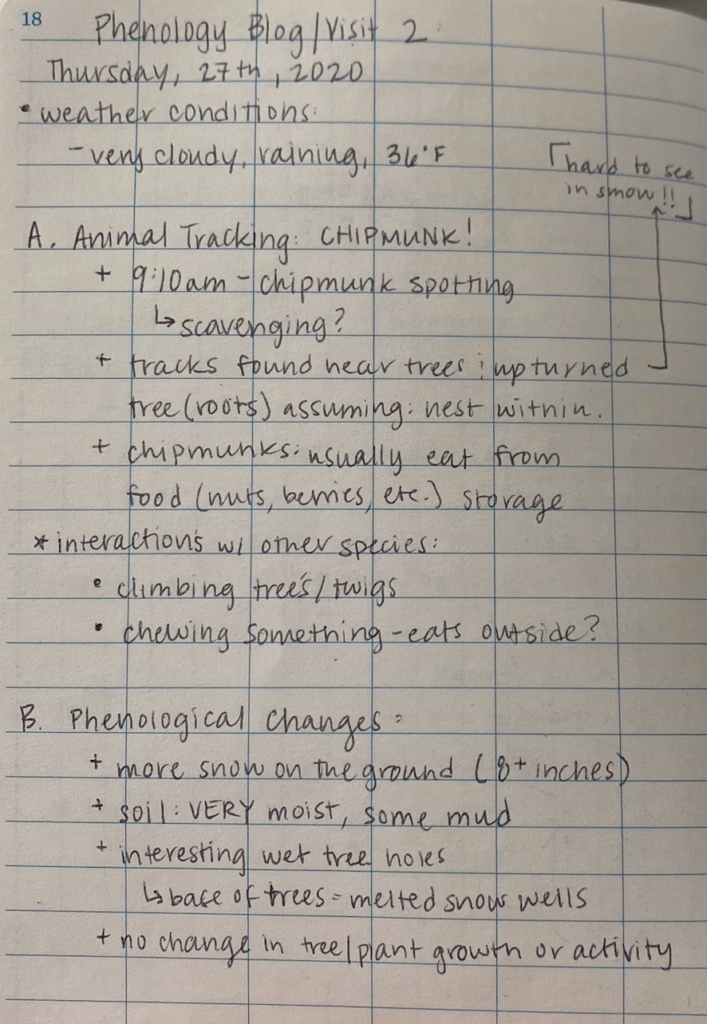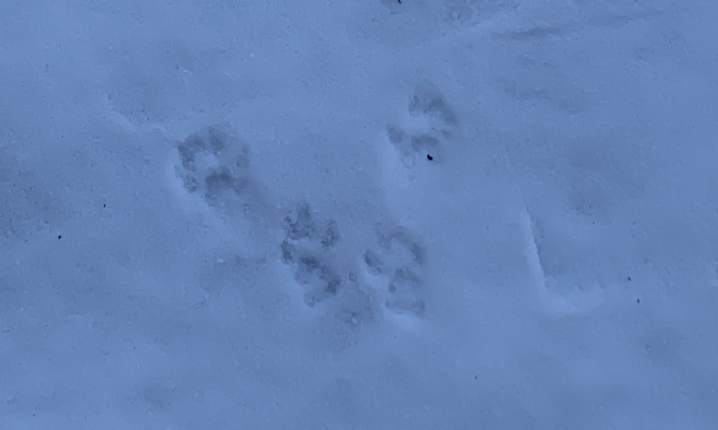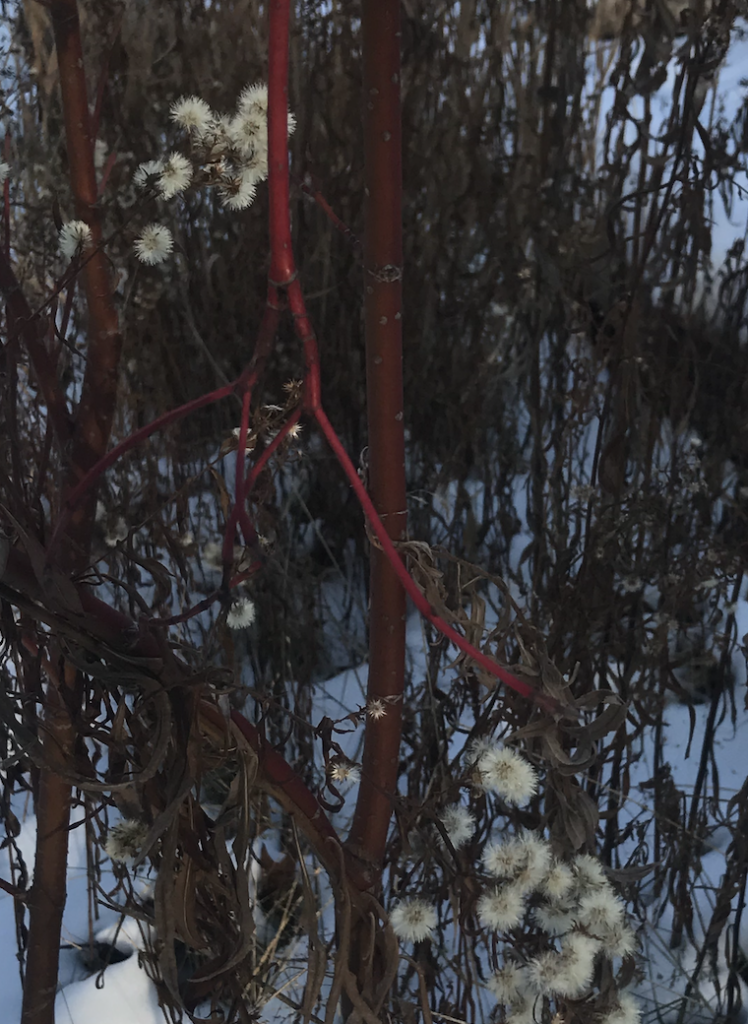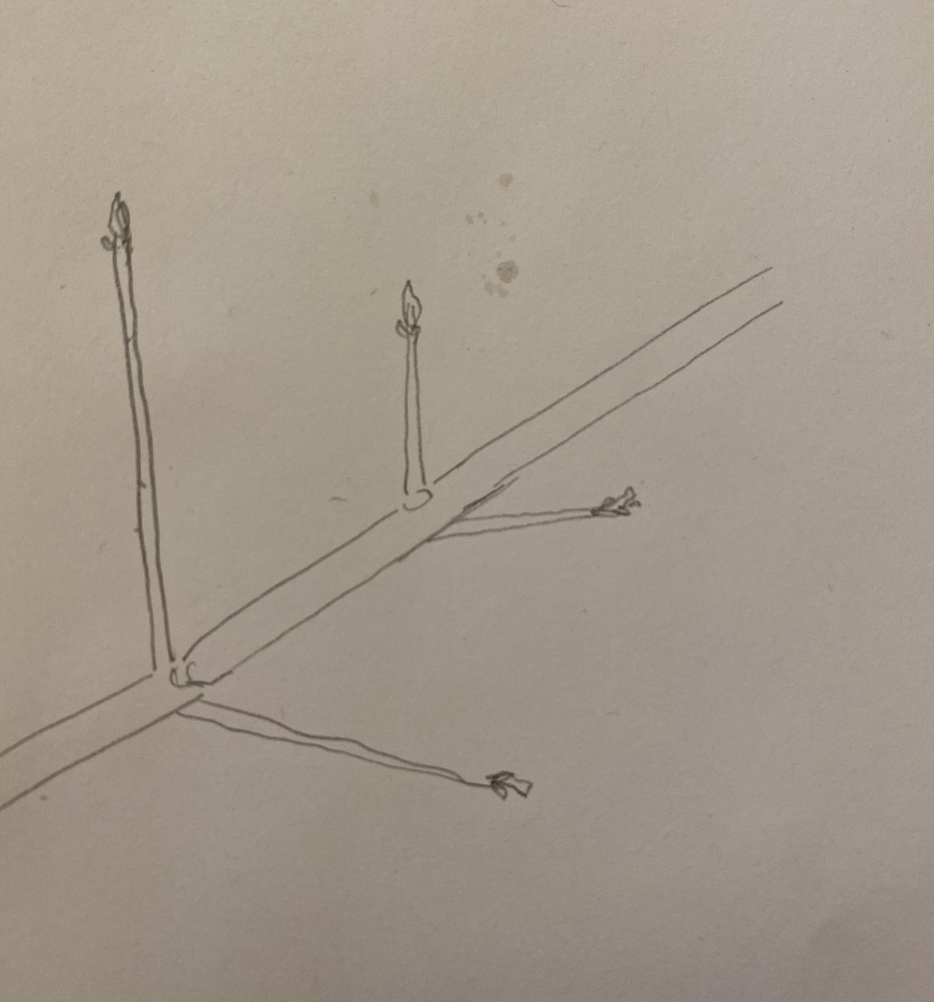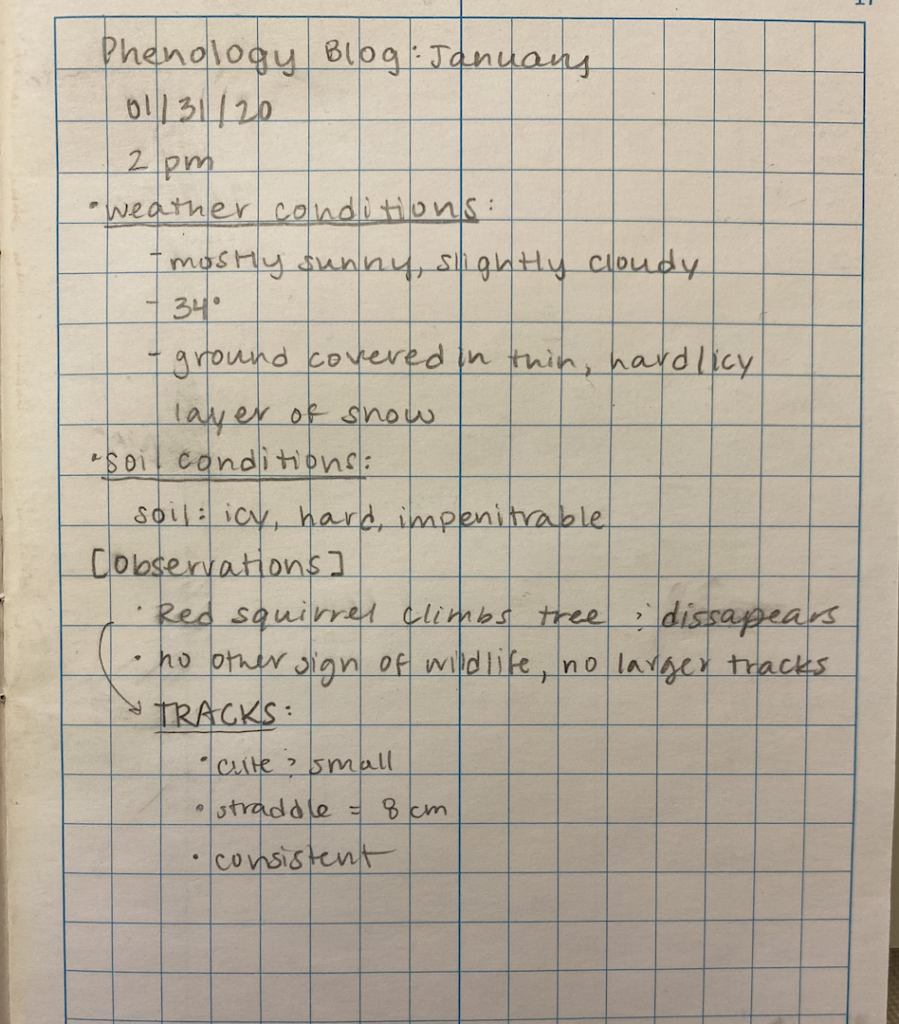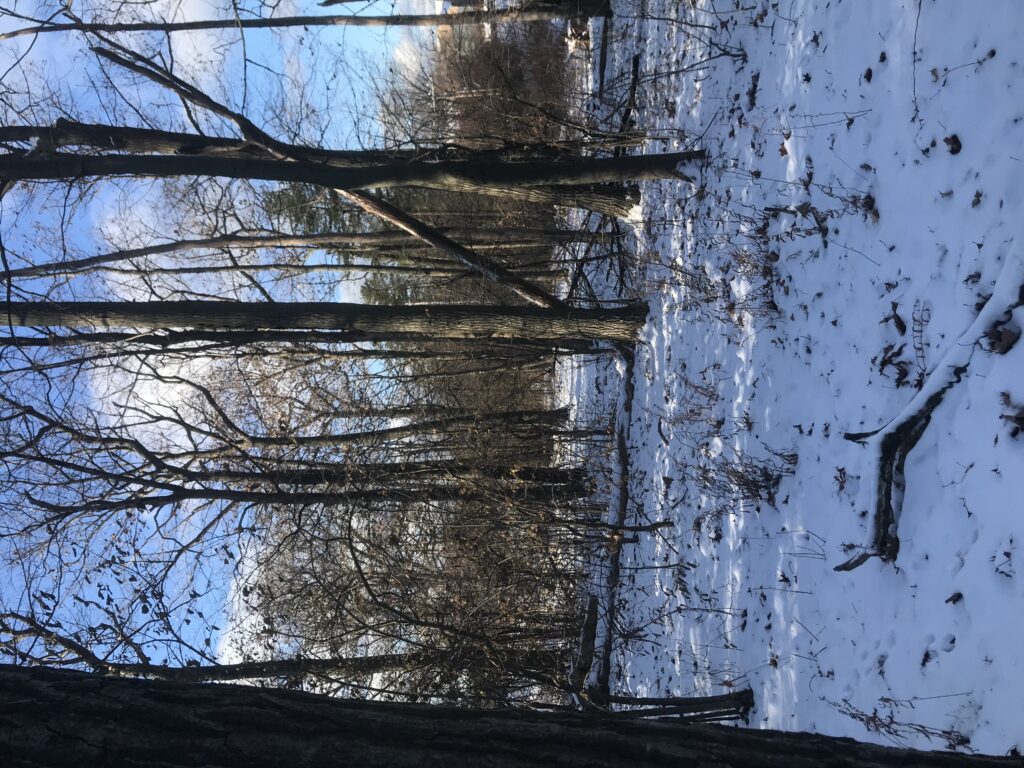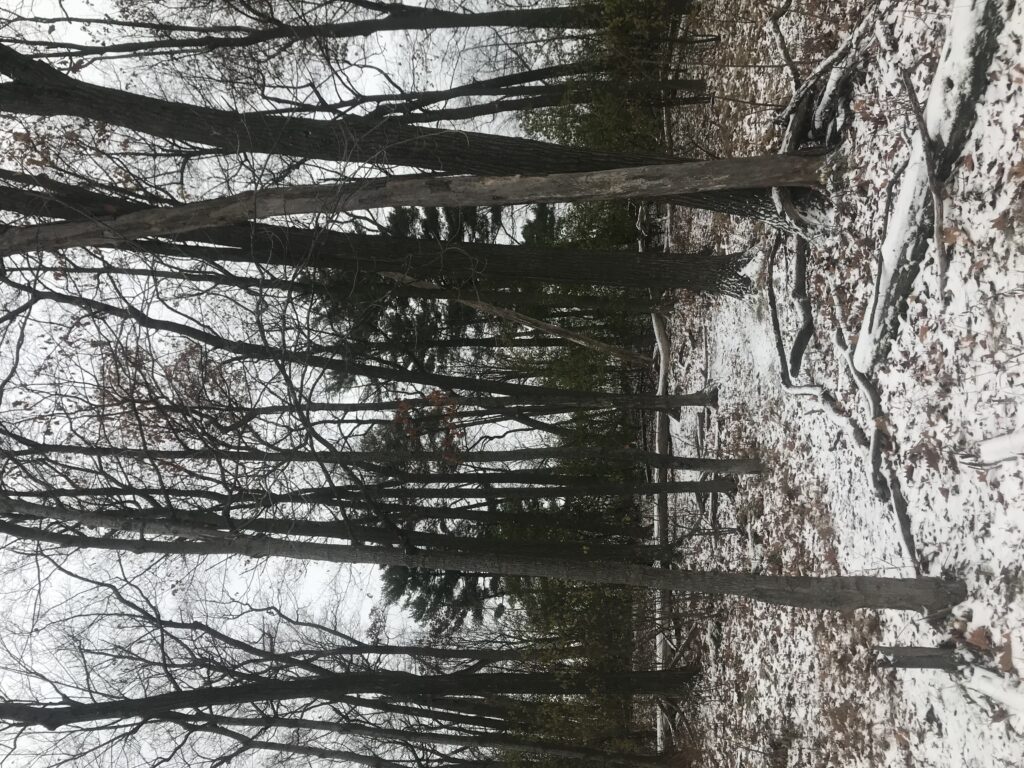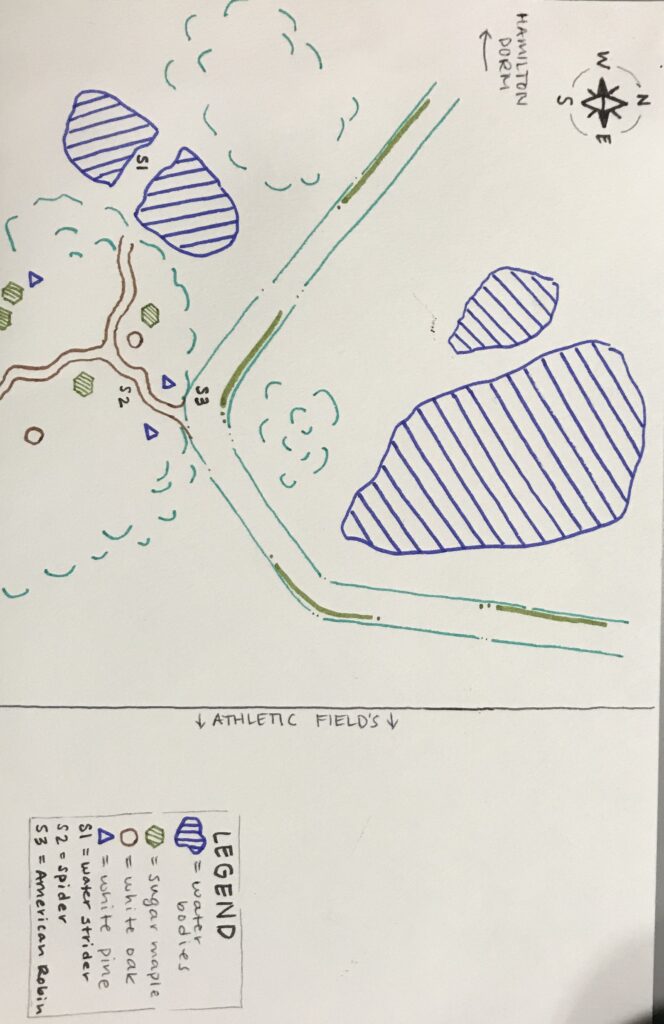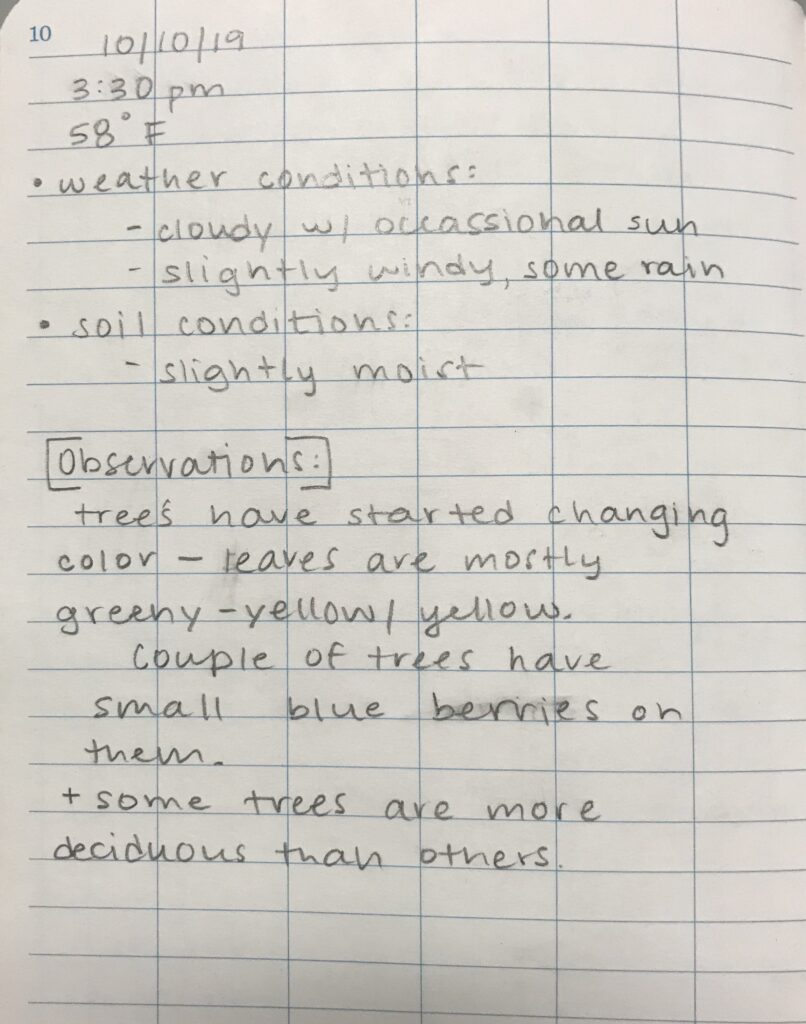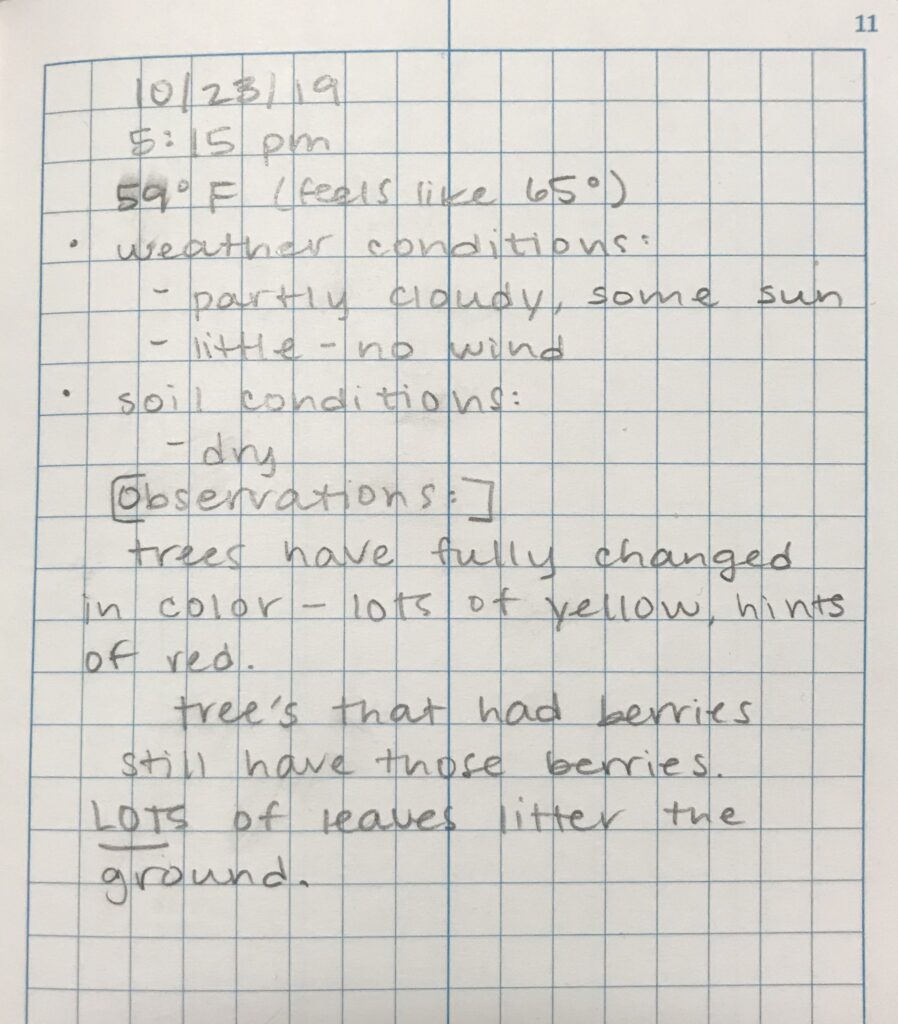- Observed Animal Species:
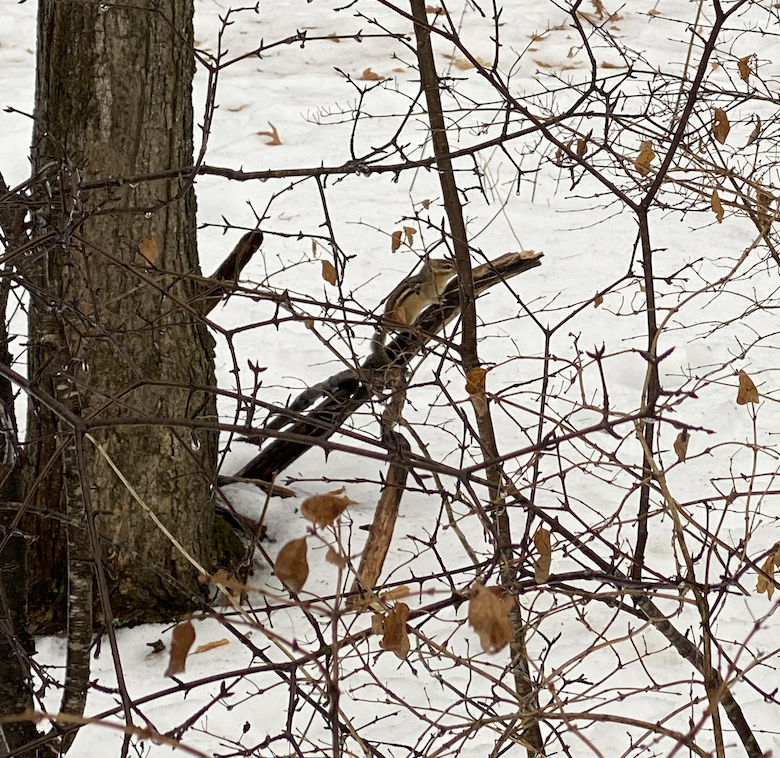
The species I observed during my phenology site visit was the Eastern Chipmunk. This small mammal typically lives in self-made tunnels or nests during the winter, but does not spend the entire season hibernating. When I first observed the Eastern Chipmunk, it had climbed on to an elevated twig and appeared to be munching on something, what I assumed was a nut either from outside or from storage. According to Nature Works, this species usually inhabits ‘open deciduous forests and/or edges of woodlands’. This habitat description fits that of my phenology spot, as it is at the edge of a woodland and is populated by some deciduous trees. I would assume some of this species predators include large carnivorous birds (such as hawks or eagles) and larger mammals (such as foxes, coyotes, wolves, etc.). As I observed this individual, it spotted me and began scurrying around the ground floor, jumping from twig, to the snow, to a fallen sapling. Once it reached the overturned tree it escaped into its upended roots and disappeared into what I believe was its nest. From the time that I was able to observe this chipmunk, it only had plant interactions. One of the first interactions I observed was the chipmunk climbing down from a large Sugar Maple. I assume the animal either climbed the tree in pursuit of food, or perhaps the tree was simply a part of the landscape the chipmunk was using to get from one location to another. Another interaction I observed was the relationship between the chipmunk and its nest/burrow. After spotting me for the first time, the chipmunk didn’t directly run to its shelter for protection, but instead did a little dance first, almost testing the waters. I found this reaction surprising, as the animal tried to get a sense for who/what I was and if I was a predator or not. I observed its tracks, once it entered its burrow, and have included them below:
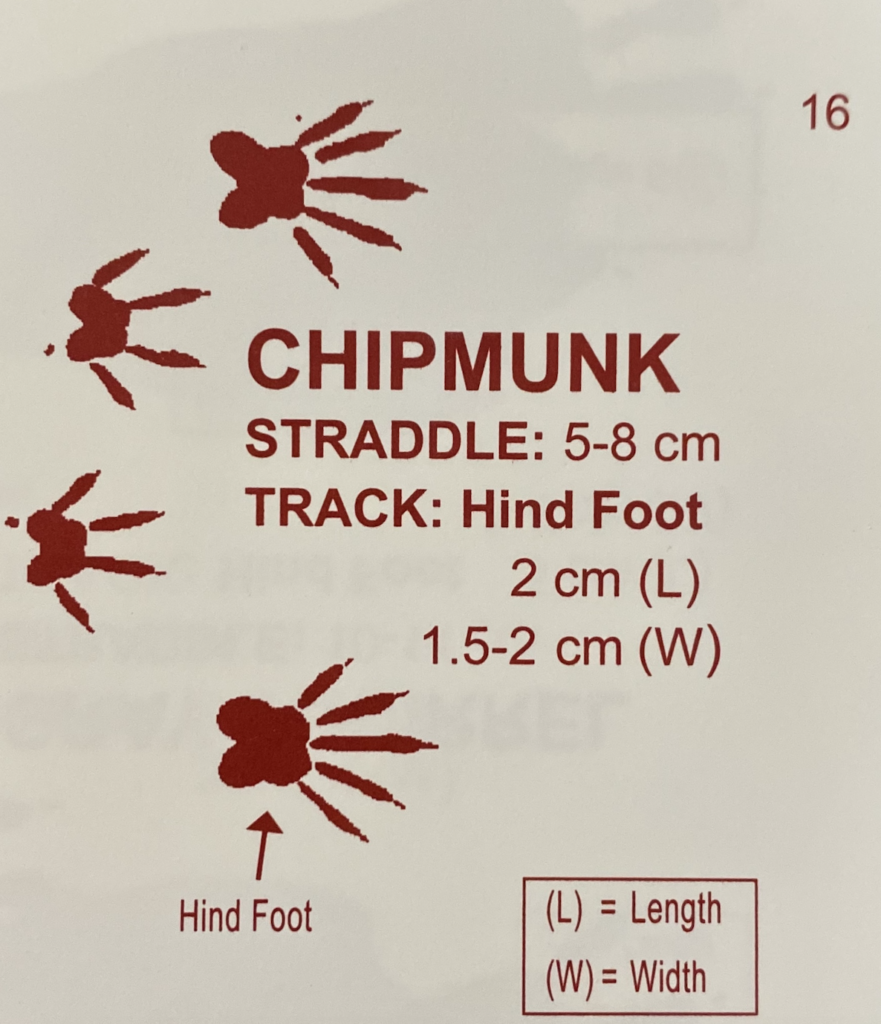
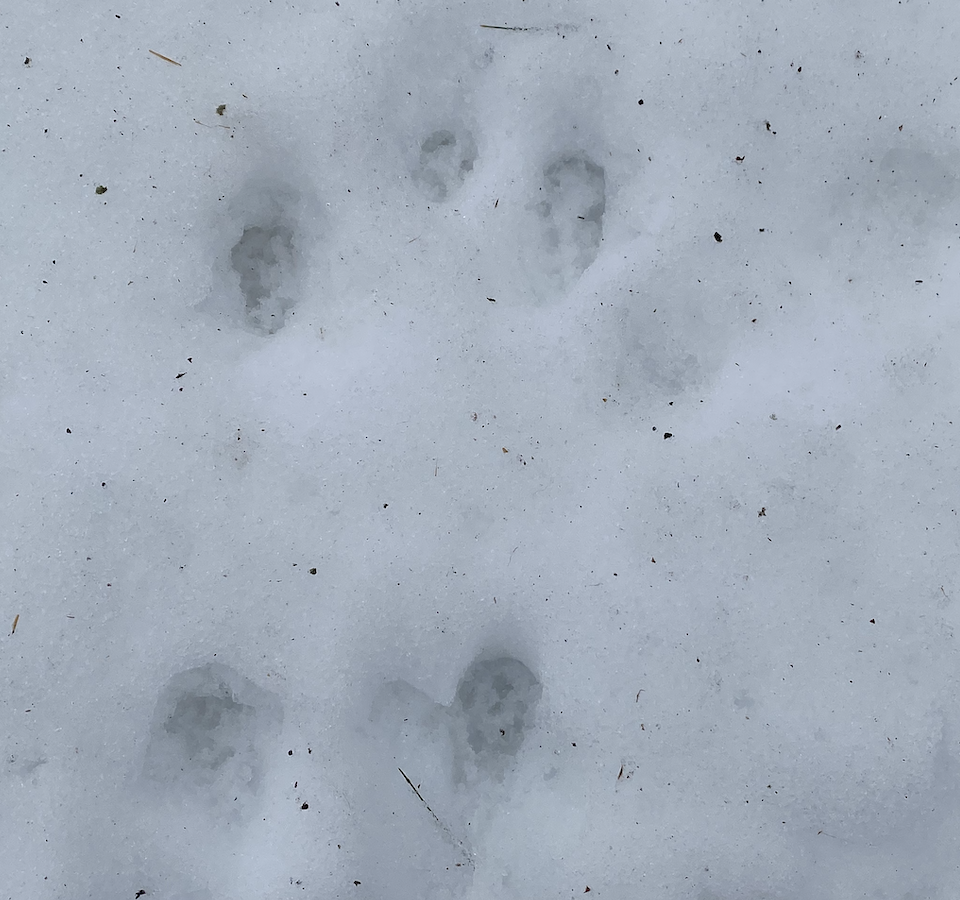
- Phenological Changes:
There have barely been any changes to my spot since my last visit. The only thing that seems to have slightly changed would be the effect of the weather on certain features, such as the soil. On the day of my visit, it was warm and raining. The combination of the temperature and the rain began to make the snow melt, and the soil became wet and muddy. The direct rooted-areas around the trees had completely melted and created tree wells at the base of every tree.
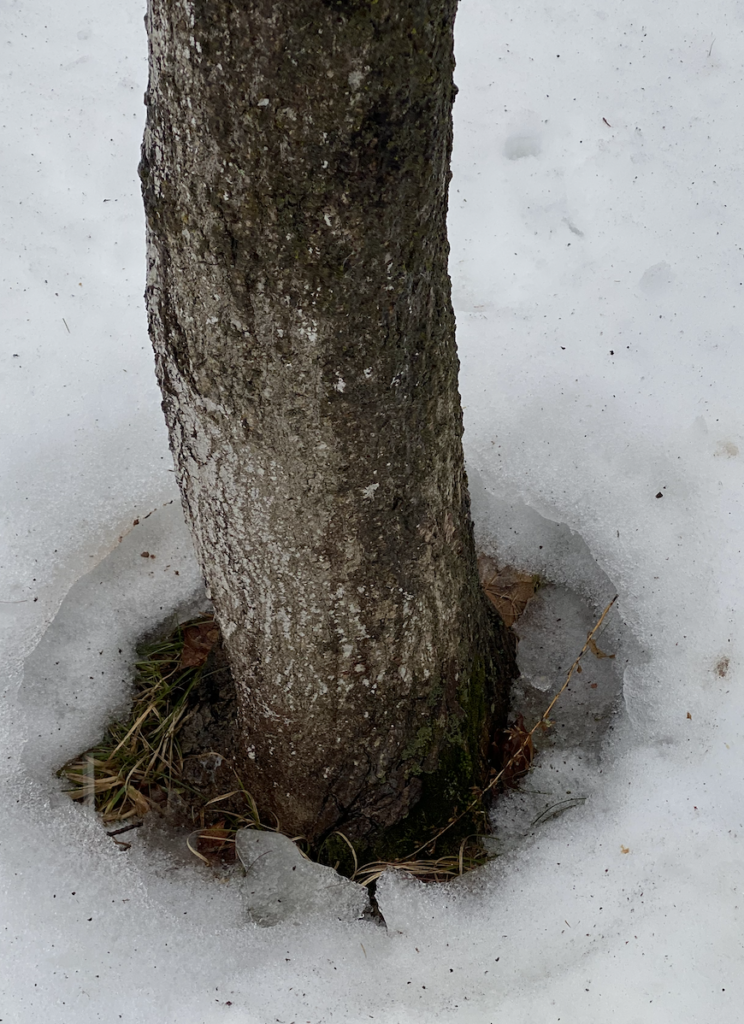
Sources:
| 1. Eastern Chipmunk – Tamias striatus – NatureWorks. (n.d.). Retrieved from https://nhpbs.org/natureworks/chipmunk.htm | |
| 2. Levine, L., & Mitchell, M. (2008). Mammal tracks and scat: Life-size tracking guide. Heartwood Press |
